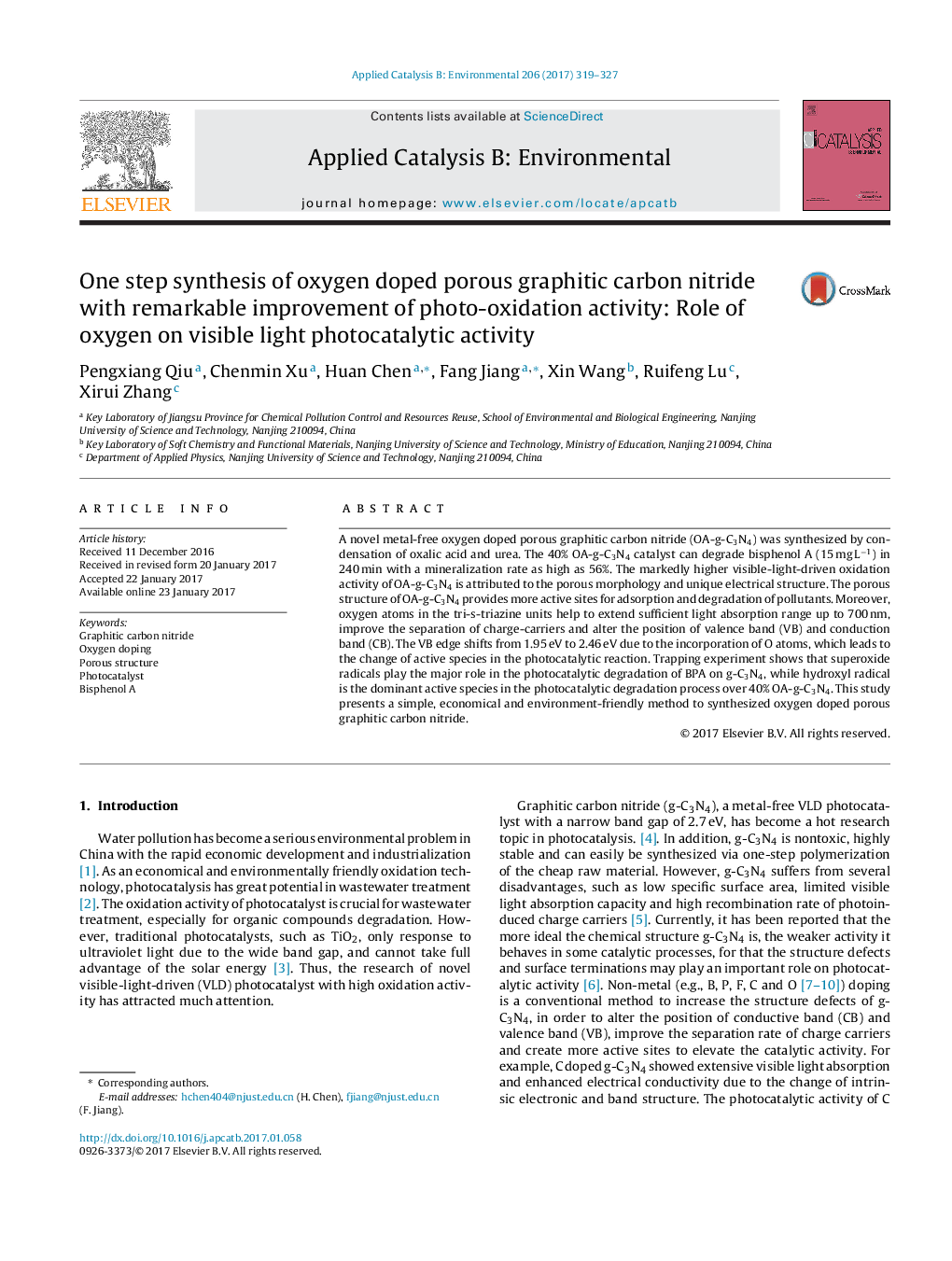| Article ID | Journal | Published Year | Pages | File Type |
|---|---|---|---|---|
| 6454694 | Applied Catalysis B: Environmental | 2017 | 9 Pages |
â¢Oxygen doped g-C3N4 (OA-g-C3N4) was made by condensation of oxalic acid and urea.â¢The metal-free OA-g-C3N4 shows high degradation activity in pollutant oxidation.â¢The adsorption edge of OA-g-C3N4 shifted to 700 nm.â¢The valence band of 40% OA-g-C3N4 shifted to 2.46 eVâ¢OH is the major active species in the photocatalytic process over 40% OA-g-C3N4.
A novel metal-free oxygen doped porous graphitic carbon nitride (OA-g-C3N4) was synthesized by condensation of oxalic acid and urea. The 40% OA-g-C3N4 catalyst can degrade bisphenol A (15 mg Lâ1) in 240 min with a mineralization rate as high as 56%. The markedly higher visible-light-driven oxidation activity of OA-g-C3N4 is attributed to the porous morphology and unique electrical structure. The porous structure of OA-g-C3N4 provides more active sites for adsorption and degradation of pollutants. Moreover, oxygen atoms in the tri-s-triazine units help to extend sufficient light absorption range up to 700 nm, improve the separation of charge-carriers and alter the position of valence band (VB) and conduction band (CB). The VB edge shifts from 1.95 eV to 2.46 eV due to the incorporation of O atoms, which leads to the change of active species in the photocatalytic reaction. Trapping experiment shows that superoxide radicals play the major role in the photocatalytic degradation of BPA on g-C3N4, while hydroxyl radical is the dominant active species in the photocatalytic degradation process over 40% OA-g-C3N4. This study presents a simple, economical and environment-friendly method to synthesized oxygen doped porous graphitic carbon nitride.
Graphical abstractDownload high-res image (117KB)Download full-size image
